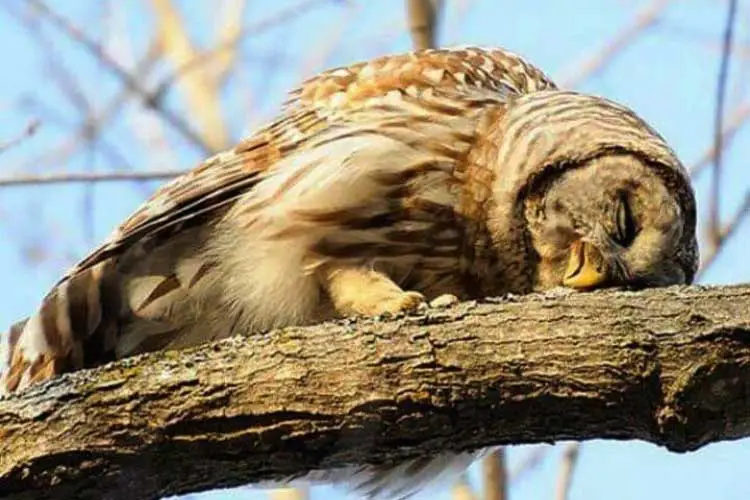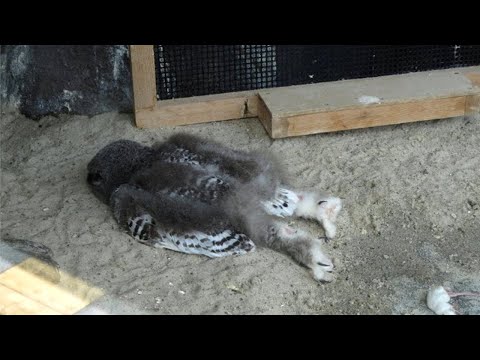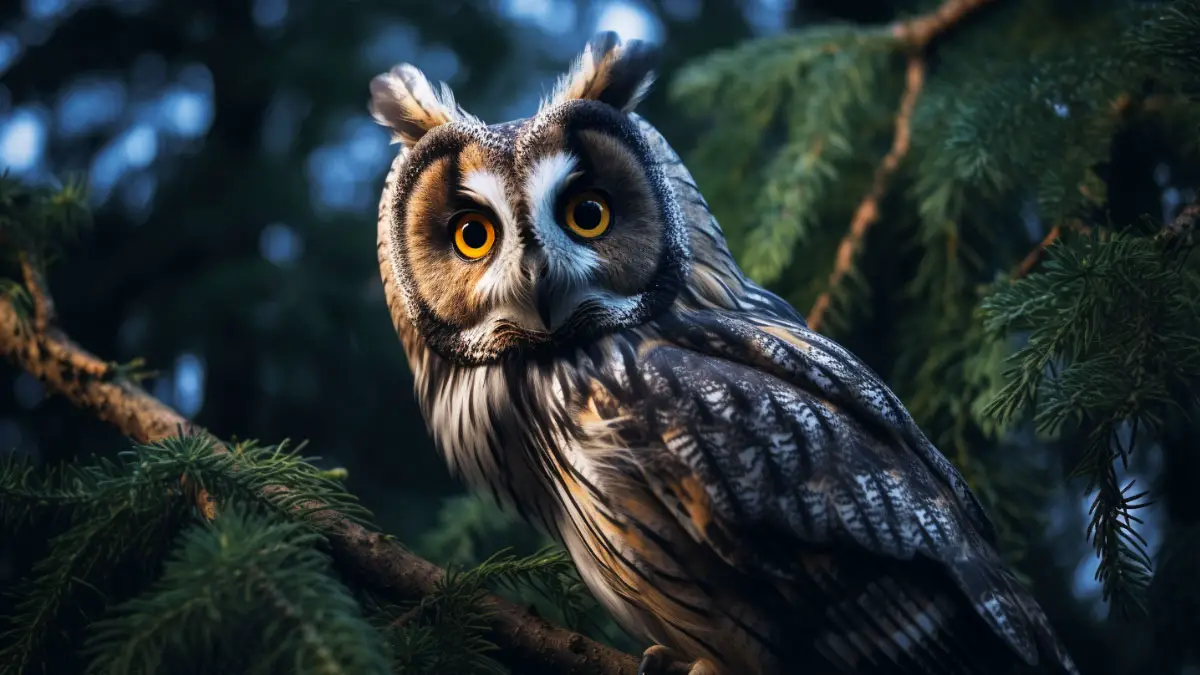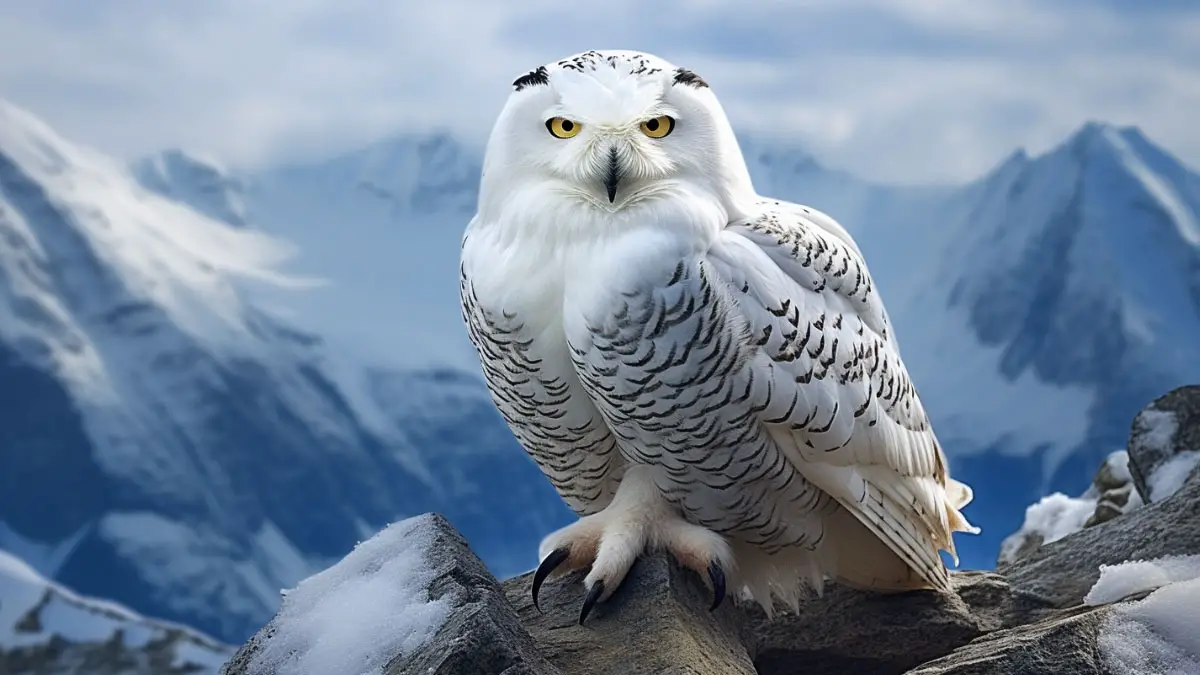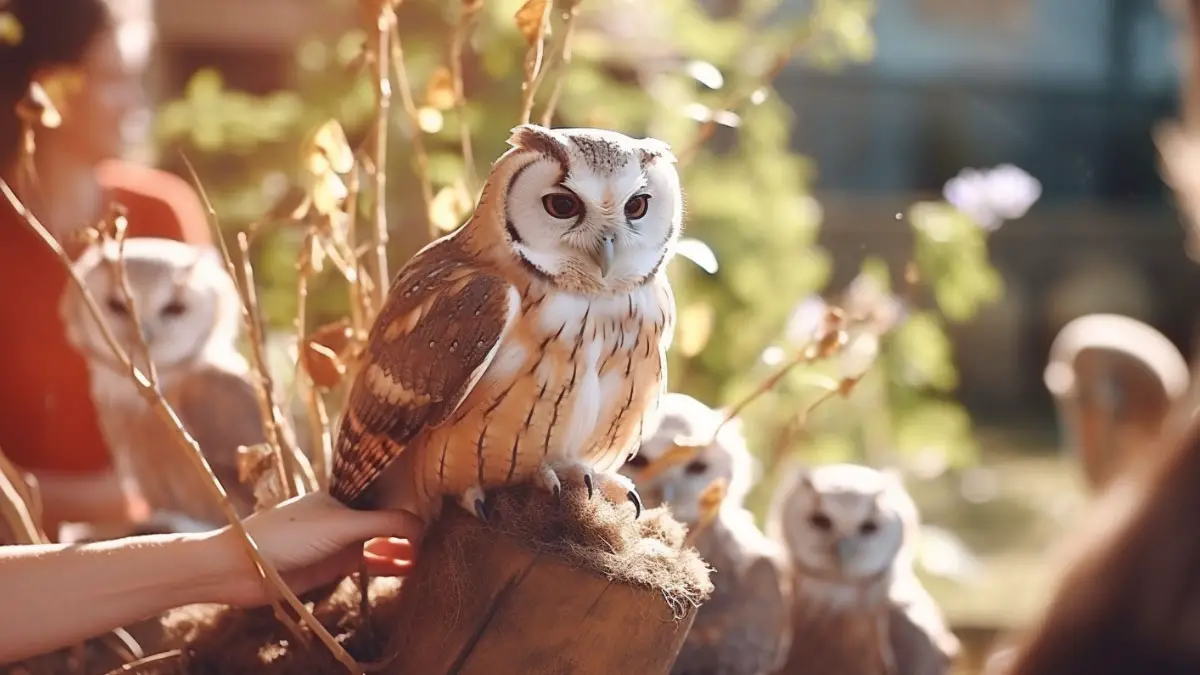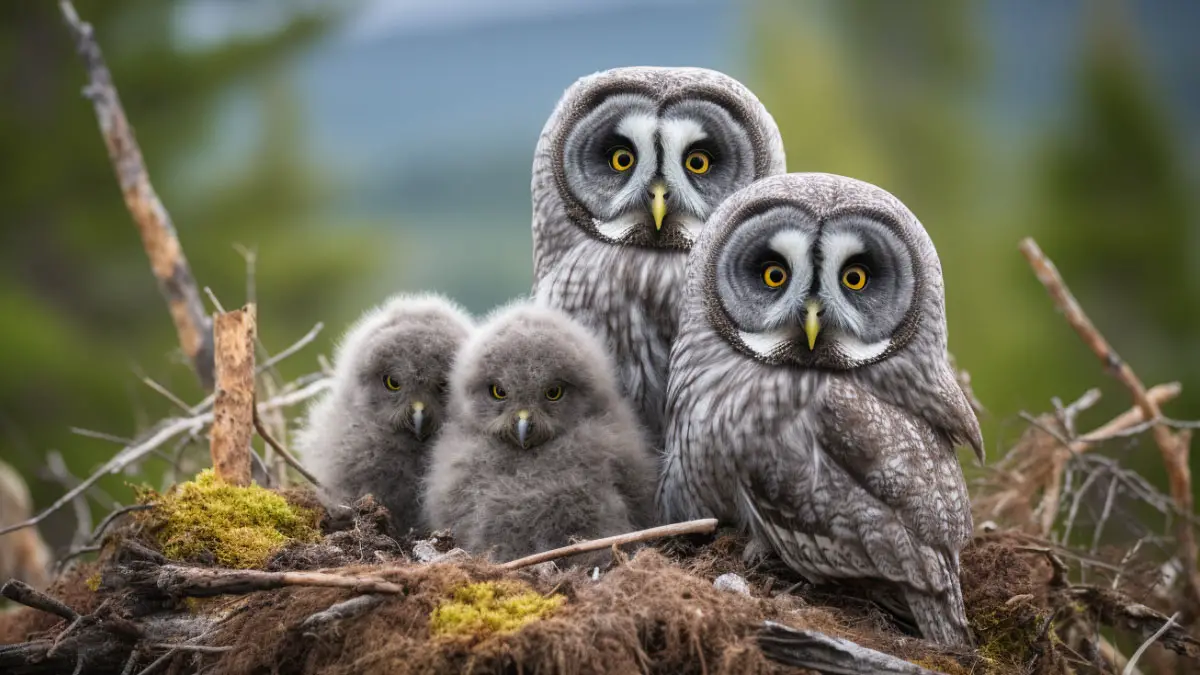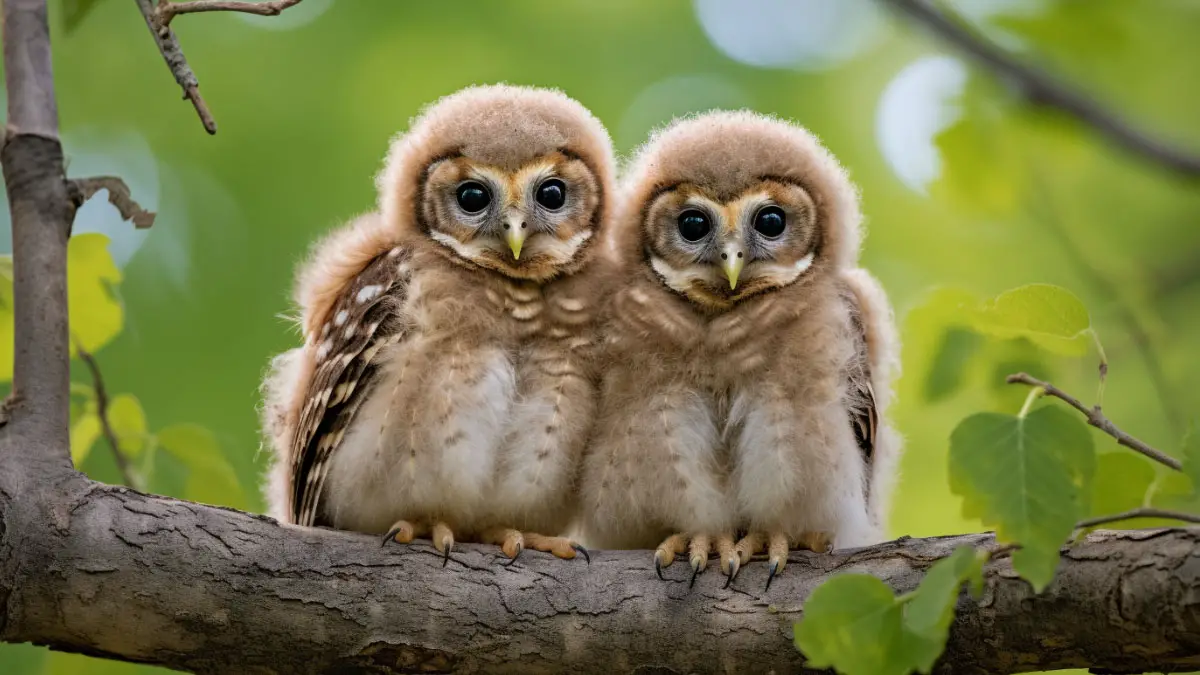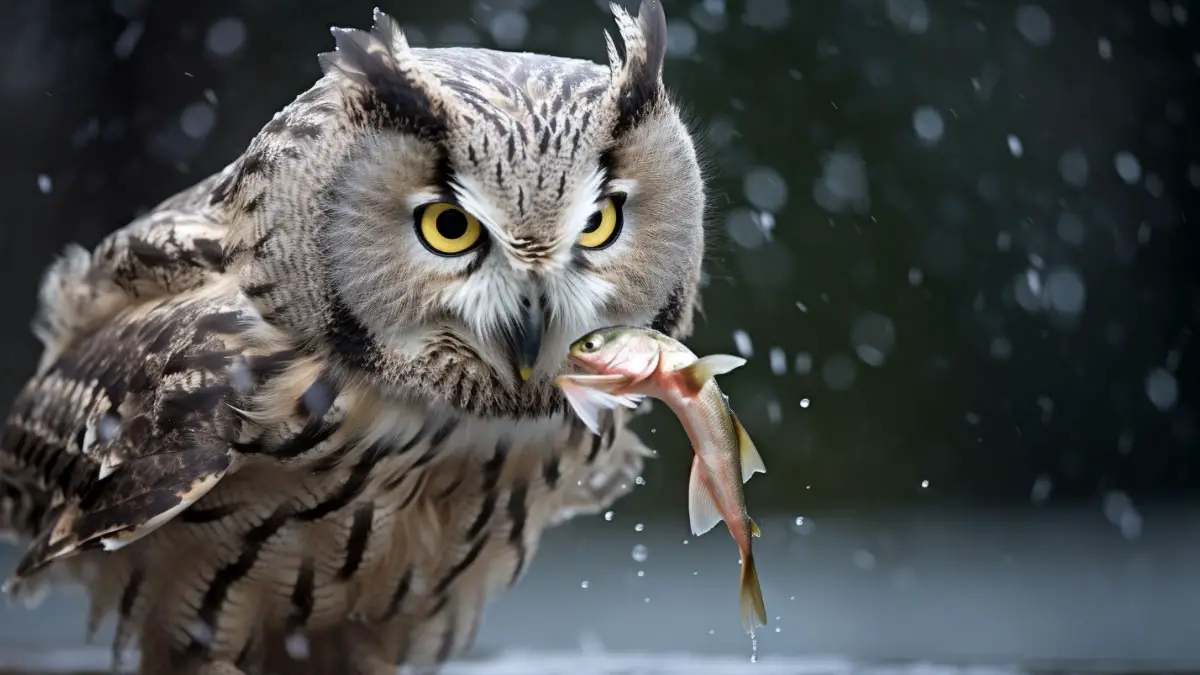The sleeping habits and patterns of an owl differ depending on their species and age. So a baby owl sleeps on its belly, facing downwards or slightly sideways.
But what’s the reason for a baby owl sleeping face down: is this normal behavior? Baby owls usually sleep with their face kept downward as their head weight is too heavy for their neck. This behavior is normal until they build adequate strength in their neck muscles.
In this article, we will discuss the sleeping habits and posture of a baby owl. You will also learn about the difference between the sleeping habits of adult and baby owls. Keep reading if you are also concerned about the baby owl sleeping face down.
Baby Owl Sleeping Face Down: Should I Be Worried?
There is no need to be worried if you find any baby owl sleeping face down. The posture will seem like someone has passed out due to heavy drinking or sickness. But chill; it’s their natural way to sleep.
You should be worried if you find any adult owl sleeping face down. Because the physical structure of an adult owl is pretty strong to hold its weight in a sitting position while sleeping.
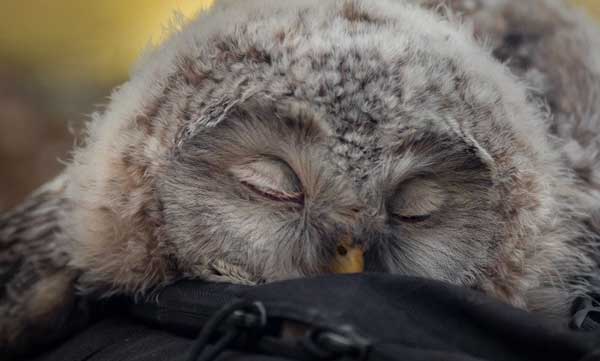
Accordingly, if the adult owl sleeps face down, it indicates that the owl needs help. Hence, you should try to help that poor owl.
On the other hand, a baby owl is delicate and weak to sleep in a sitting position like an adult. That’s why they will sleep in a position that is comfortable for them. So, if you find a baby owl sleeping face down, that means they are comfortable in that sleeping posture.
Why Do Baby Owls Sleep Face Down?
Mainly, baby owls sleep face down because their heads are too heavy. An adult owl has enough strength in their neck to hold the weight of their head. But owlets are too small to hold up their head’s weight.
Generally, an adult owl can grow up to 2-3 feet in length, but an owl’s baby can rarely be more than 2-3 inches. Also, the head size ratio is relatively more on their total body length.
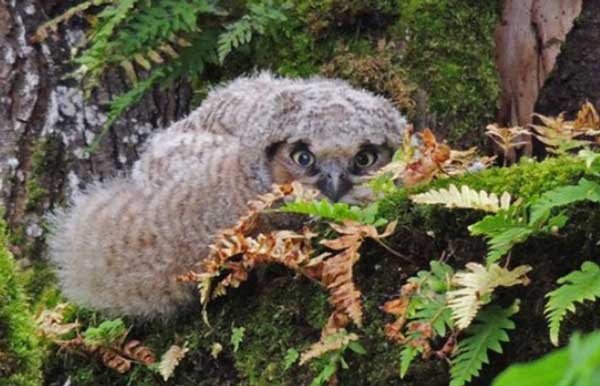
When the baby owls are awake, they can hold up their heads straight. But during sleep, their nerves will relax, and their strength will be less. Therefore, you will find baby owls sleeping lying down like they have passed out due to heavy drinking.
In this way, they lean their head weight against their nest or other baby owls in the nest. As a result, they can sleep peacefully in relief without bothering about the weight of their large head.
How Do Baby Owls Sleep?
Sleeping baby owls look pretty cute with their faces down and straight lying posture. To get a clear idea about how they sleep, you can watch this
Here are several descriptions of their sleeping positions:
1. Face Down Or Sideways
Sometimes, directly facing the nest or other owlets of the nest might cause breathing difficulty. For this reason, you will sometimes find them turning their head slightly sideways. This will help them to breathe properly even if they are lying on their stomach.
2. Holds Branches With Talons
Baby owls’ talons can grip the branch so tightly that it prevents them from falling from the nest while sleeping. For example, a Great Horned Owl has almost 200-500 psi grabbing force in its talons.
This force is a little less for infant owls, but still, that’s enough for holding their body in place when they are snoozing.
3. Straight Lying Position
The baby owl sleeps in a straight position holding the branch with the hallux or talons of their rear feet. But when the baby owl bends their legs, the talon will release the branch, and it will fall. To prevent this, sleeping baby owls always keep their legs straight.
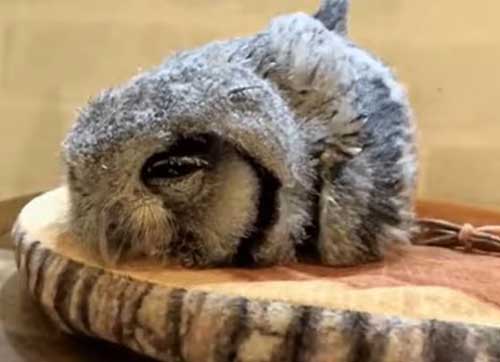
Do Baby Owls Dream While Sleeping?
Yes. When a baby owl sleeps, it will go through vivid dream phases, almost like human children. Generally, the reason behind their vivid dream is their REM sleeping.
As owls are nocturnal creatures, they will sleep when their surroundings are awake. That’s why they need to be conscious about their surroundings to avoid attack from predators. Hence, when they sleep, they always sleep in a half-awake state.
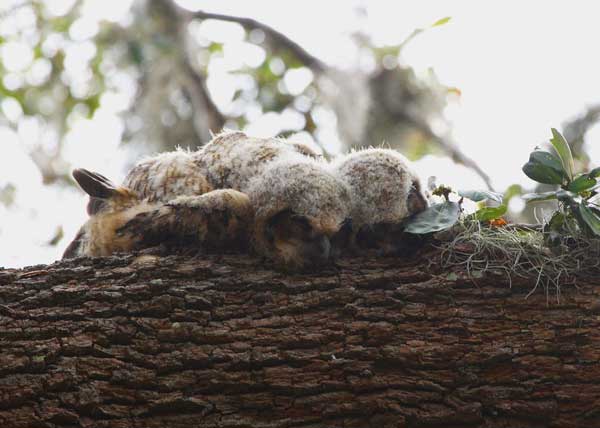
Thus, if you find a baby owl sleep peacefully, it is in its rapid eye movements (REM)stage. That means it can get awake with the slightest hint of any danger. But most realistic and vivid dreams come in the REM stages, which baby owls experience a lot.
The gene of REM sleeping is related to the development of the brain and melanism. When with age, their melanism increases and the feathers start to get darker, they also begin to have less REM sleep. Which eventually results in less dreaming.
How Do The Sleeping Habits Of Owlets Differ From Adult Owls?
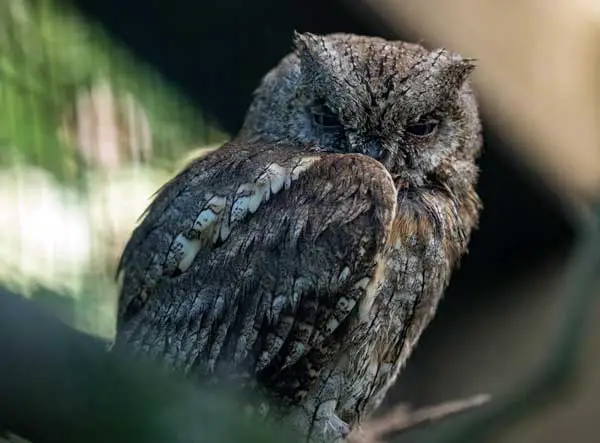
In many perspectives, the sleeping habit of an adult owl is different from an owlet’s. Here are a few differences:
| Parameters | Owlets | Adult Owl |
| Posture | You will find baby owl sleeping on stomach | Adult owl sleeps while sitting |
| Place | Nests | Hollow spaces, fractures of buildings, or cliff ledges |
| Time | Both day and night | Generally in daytime |
| Dreaming | More | Less |
1. Posture
The significant difference in the sleeping habits of an adult and young owl is in their sleeping posture. Typically, you will notice a cute baby owl sleeping on belly, mainly on the front of their body.
But an adult owl will sleep peacefully in sitting positions, turning its head backward and closing their eyes or keeping one eye open. It might rest on one or two legs.
2. Place
As owls typically sleep during the daytime when almost all other animals are awake, they find a peaceful area for sleeping. They are terrible at making nests; that’s why they only let their young there to sleep.
And they find some hollow space on a tree, a cliff of ledges, and fractures of the building for sleeping.
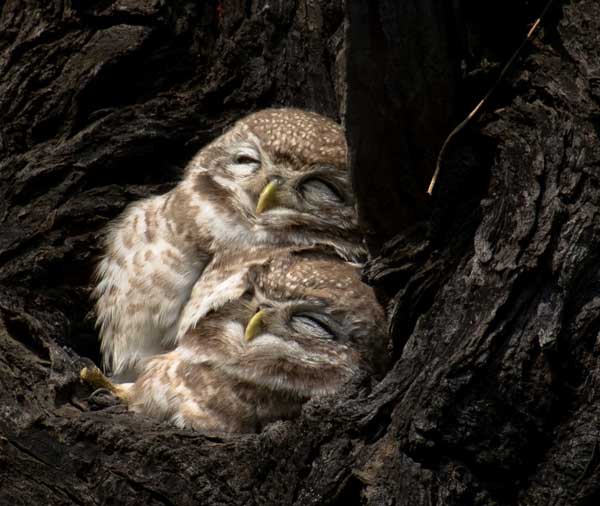
On the other hand, the young will only sleep in their nest until they get big enough to adapt to the surroundings.
3. Time
Generally, owls are nocturnal creatures and hunt at night. But baby owls don’t need to hunt as the adult owls will feed the owlets after hunting. Hence, owlets can rest or sleep at the nest during the night.
But adult owls need to hunt at night to feed their young and also themselves. With the sunrise, adult owls start to think about going to sleep.
4. Dreaming
With aging, the genes responsible for owlets’ dreaming get involved in generating thyroid and insulin hormones. These hormones help develop the brain, and a developed brain is less susceptible to dreaming.
FAQs
In this FAQ section, we will answer several familiar questions that people ask regarding the sleeping of baby owls.
No. You can’t see the Rapid Eye Movement (REM) of owlets on their eyelids. The reason is owls can’t move or rotate their eyeballs like humans. Researchers become sure about their REM behavior by examining their brain response while sleeping.
A baby owl needs to sleep for almost 12 hours a day. But they don’t sleep 12 hours at once. Rather than sleeping long, they take short naps with gaps. Mostly, owlets will sleep a few hours straight, recharging their energy. And after a gap of several periods, they will drift into sleep again.
Baby owls sleep more profoundly than adult owls. Generally, all the owls sleep at a half-awake state, but awakeness increases with aging. Due to the underdeveloped brain and the presence of several genes, baby owls will sleep deeper than adult ones.
Conclusion
Baby owls look adorable with their facing down and straight position while sleeping. But this sleeping posture isn’t the same as an adult owl. Thus, if you are familiar with adult owls, you might get concerned about the unique sleeping position of owlets.
Throughout the article, we discussed “baby owl sleeping face down: is this normal behaviour?” Thus, now, it will be relatively more straightforward for you to understand the unique snoozing behavior of those cute baby owls.
